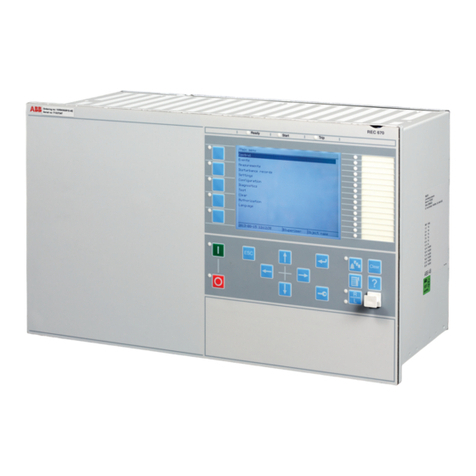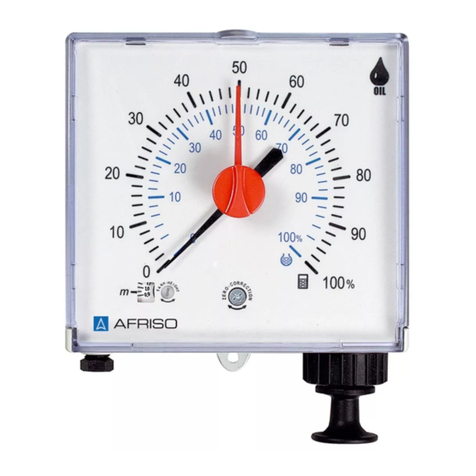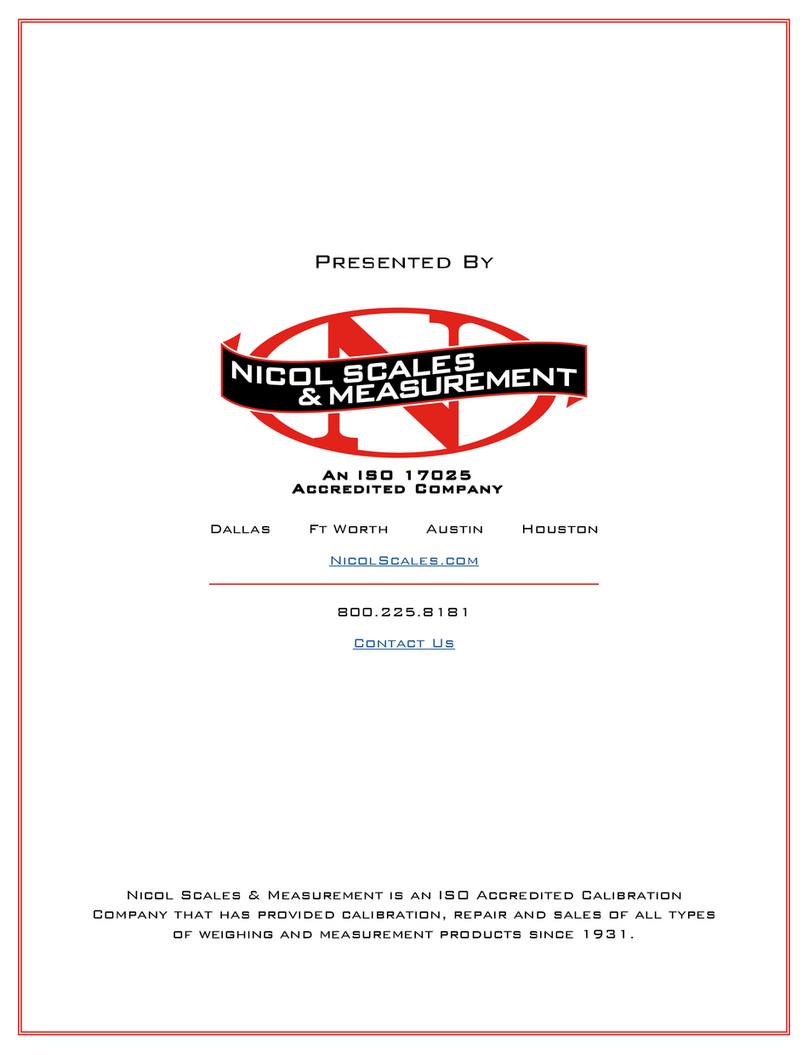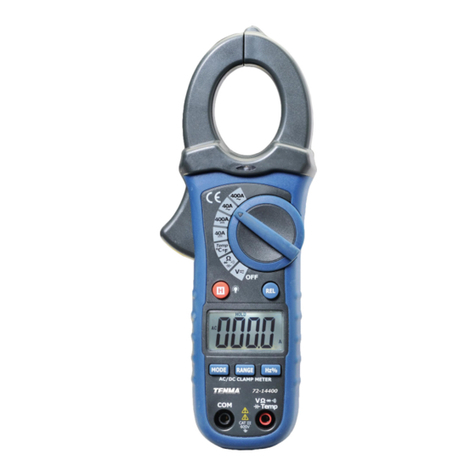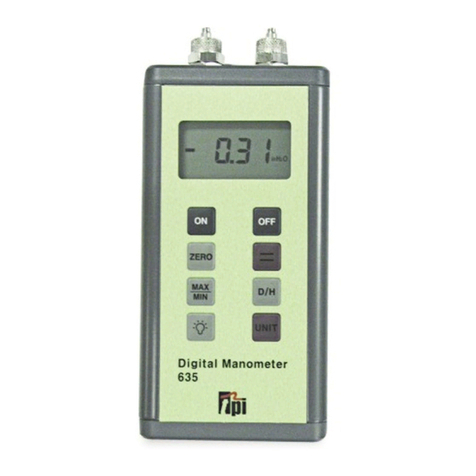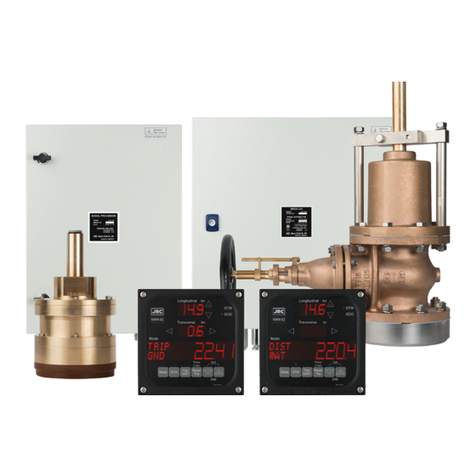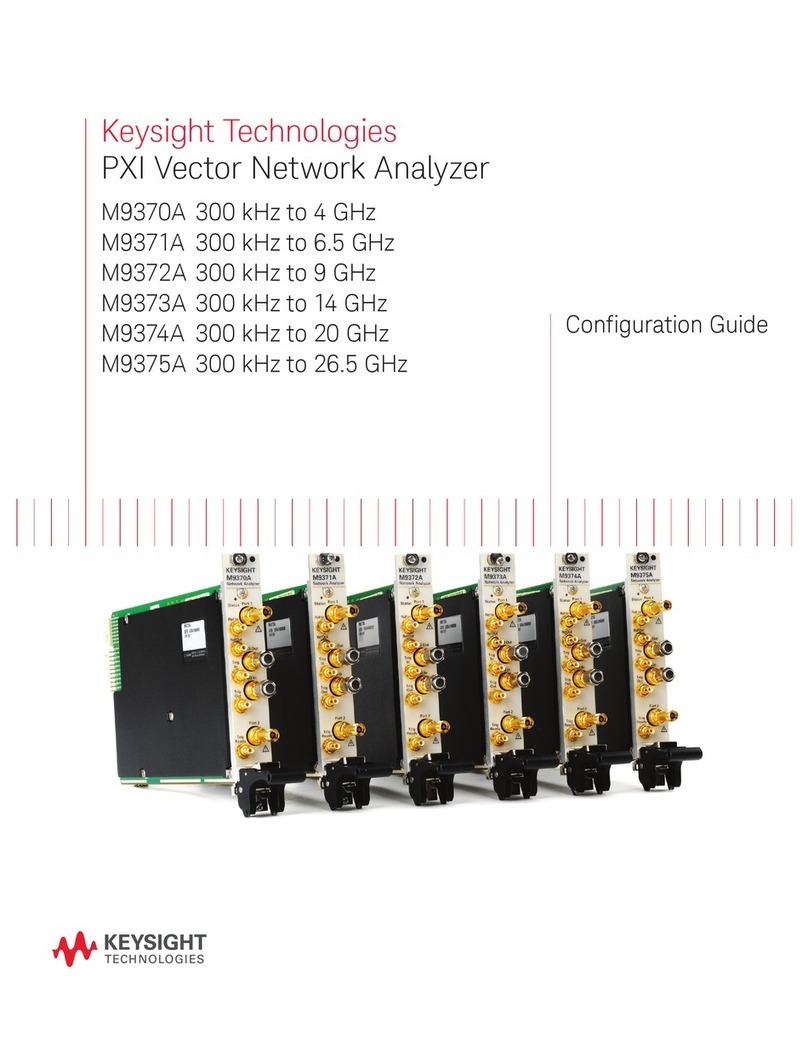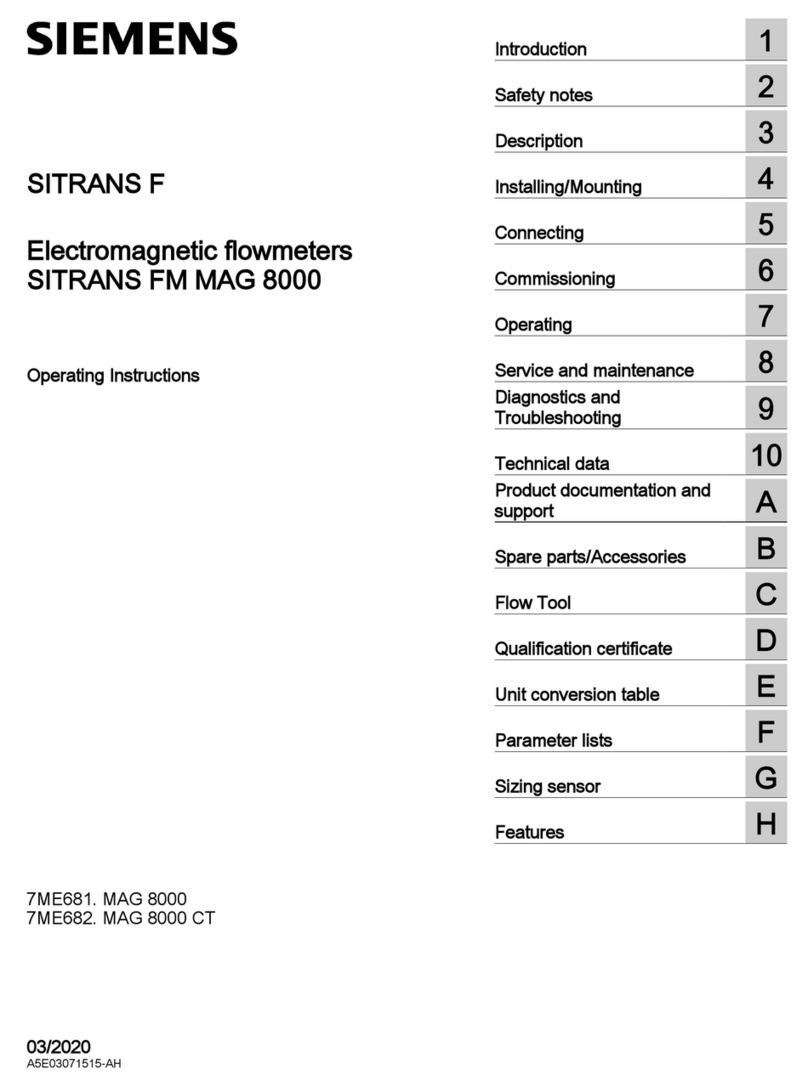ROHDE & GRAHL R&S ZPH Series User manual

R&S®Cable Rider ZPH
Handheld Cable and
Antenna Analyzer
Getting Started
1321094402
Version 12
(=E9\2)

This document describes the following R&S®Cable Rider ZPH models with firm-
ware version 1.90 and higher:
●R&S®ZPH (1321.1211.02)
●R&S®ZPH (1321.1211.12)
●R&S®ZPH (1321.1211.52, equivalent to 1321.1211.02)
© 2022 Rohde & Schwarz GmbH & Co. KG
Muehldorfstr. 15, 81671 Muenchen, Germany
Phone: +49 89 41 29 - 0
Email: [email protected]
Internet: www.rohde-schwarz.com
Subject to change – data without tolerance limits is not binding.
R&S® is a registered trademark of Rohde & Schwarz GmbH & Co. KG.
Trade names are trademarks of the owners.
1321.0944.02 | Version 12 | R&S®Cable Rider ZPH
Throughout this manual, products from Rohde & Schwarz are indicated without the ® symbol , e.g.
R&S®Cable Rider ZPH is indicated as R&S Cable Rider ZPH.

Contents
R&S®Cable Rider ZPH
3Getting Started 1321.0944.02 ─ 12
Contents
1 Safety information................................................................. 5
2 Korea certification class B....................................................6
3 Documentation overview...................................................... 7
3.1 Manuals..................................................................................................7
3.2 Data sheet..............................................................................................8
3.3 Calibration certificate........................................................................... 8
3.4 Release notes, open source acknowledgment.................................. 8
3.5 Application notes, application cards, videos.....................................8
4 Welcome to the R&S Cable Rider ZPH................................ 9
5 Preparing for use................................................................. 10
5.1 Putting into operation.........................................................................10
5.1.1 Unpacking and checking the instrument............................................... 11
5.1.2 Accessory list........................................................................................ 12
5.1.3 Setting up the R&S Cable Rider ZPH................................................... 12
5.1.4 Using the AC adapter............................................................................14
5.1.5 Battery operation...................................................................................15
5.1.6 Battery maintenance............................................................................. 17
5.2 Switching the instrument on and off.................................................18
6 Instrument tour.................................................................... 20
6.1 Front view............................................................................................ 20
6.2 Top view...............................................................................................21
6.3 Left view...............................................................................................25
6.4 Right view............................................................................................ 25
6.5 Rear view............................................................................................. 26

Contents
R&S®Cable Rider ZPH
4Getting Started 1321.0944.02 ─ 12
6.6 Display overview.................................................................................26
7 Contacting customer support............................................ 28
Index..................................................................................... 29

Safety information
R&S®Cable Rider ZPH
5Getting Started 1321.0944.02 ─ 12
1 Safety information
The product documentation helps you use the R&S Cable Rider ZPH safely and
efficiently. Follow the instructions provided here and in the printed "Basic Safety
Instructions". Keep the product documentation nearby and offer it to other users.
Intended use
The R&S Cable Rider ZPH is intended for the development, production and verifi-
cation of electronic components and devices in industrial, administrative, and lab-
oratory environments. Use the R&S Cable Rider ZPH only for its designated pur-
pose. Observe the operating conditions and performance limits stated in the data
sheet.
Where do I find safety information?
Safety information is part of the product documentation. It warns you about the
potential dangers and gives instructions how to prevent personal injuries or dam-
age caused by dangerous situations. Safety information is provided as follows:
●The printed "Basic Safety Instructions" provide safety information in many lan-
guages and are delivered with the R&S Cable Rider ZPH.
●Throughout the documentation, safety instructions are provided when you
need to take care during setup or operation.

Korea certification class B
R&S®Cable Rider ZPH
6Getting Started 1321.0944.02 ─ 12
2 Korea certification class B
이 기기는 가정용(B급) 전자파 적합기기로서 주로 가정에서 사용하는 것을 목적으
로 하며, 모든 지역에서 사용할 수 있습니다.

Documentation overview
R&S®Cable Rider ZPH
7Getting Started 1321.0944.02 ─ 12
3 Documentation overview
This section provides an overview of the R&S Cable Rider ZPH user documenta-
tion.
3.1 Manuals
You find the documents on the R&S Cable Rider ZPH product page at:
http://www.rohde-schwarz.com/manual/zph
Getting started manual
Introduces the R&S Cable Rider ZPH and describes how to set up and start work-
ing with the product. The printed document is delivered with the instrument.
User manual
Contains the description of all instrument modes and functions. It also provides
an introduction to remote control, a complete description of the remote control
commands with programming examples, and information on maintenance and
instrument interfaces. Includes the contents of the getting started manual.
The online version of the user manual provides the complete contents for immedi-
ate display on the internet.
Basic safety instructions
Contains safety instructions, operating conditions and further important informa-
tion. The printed document is delivered with the instrument.
Instrument security procedures manual
Deals with security issues when working with the R&S Cable Rider ZPH in secure
areas.
Service manual
Describes the performance test for checking the rated specifications, module
replacement and repair, firmware update, troubleshooting and fault elimination,
and contains mechanical drawings and spare part lists. The service manual is
Manuals

Documentation overview
R&S®Cable Rider ZPH
8Getting Started 1321.0944.02 ─ 12
available for registered users on the global Rohde & Schwarz information system
(GLORIS, https://gloris.rohde-schwarz.com).
3.2 Data sheet
The data sheet contains the technical specifications of the R&S Cable Rider ZPH.
It also lists the options and their order numbers as well as optional accessories.
The brochure provides an overview of the R&S Cable Rider ZPH and shows its
specific characteristics.
http://www.rohde-schwarz.com/brochure-datasheet/zph
3.3 Calibration certificate
The document is available on https://gloris.rohde-schwarz.com/calcert. You need
the device ID of your instrument, which you can find on a label on the rear panel.
3.4 Release notes, open source acknowledgment
The release notes list new features, improvements and known issues of the cur-
rent firmware version, and describe the firmware installation.
The open source acknowledgment document provides verbatim license texts of
the used open source software.
http://www.rohde-schwarz.com/firmware/zph
3.5 Application notes, application cards, videos
These documents contain information about possible applications and back-
ground information on various topics, see www.rohde-schwarz.com/appnotes
Application notes, application cards, videos

Welcome to the R&S Cable Rider ZPH
R&S®Cable Rider ZPH
9Getting Started 1321.0944.02 ─ 12
4 Welcome to the R&S Cable Rider ZPH
The R&S Cable Rider ZPH is a new generation Rohde & Schwarz cable and
antenna analyzer developed to meet demanding customer requirements. Offering
touchscreen input, the analyzer enhances user experience in making measure-
ments fast and easy.
This user manual contains a description of the functionality that the instrument
provides. The latest version is available for download at the product homepage
(http://www.rohde-schwarz.com/product/zph.html).

Preparing for use
R&S®Cable Rider ZPH
10Getting Started 1321.0944.02 ─ 12
5 Preparing for use
5.1 Putting into operation
This chapter describes the basic steps to be taken when setting up the R&S
Cable Rider ZPH for the first time.
Risk of injury due to disregarding safety information
Observe the information on appropriate operating conditions provided in the
data sheet to prevent personal injury or damage to the instrument. Read
and observe the basic safety instructions provided with the instrument, in
addition to the safety instructions in the following sections. In particular:
●Do not open the instrument casing.
Risk of instrument damage due to inappropriate operating conditions
Specific operating conditions are required to ensure accurate measure-
ments and to avoid damage to the instrument. Observe the information on
appropriate operating conditions provided in the basic safety instructions
and the instrument's data sheet.
Instrument damage caused by electrostatic discharge
Electrostatic discharge (ESD) can damage the electronic components of the
instrument and the device under test (DUT). Electrostatic discharge is most
likely to occur when you connect or disconnect a DUT or test fixture to the
instrument's test ports. To prevent electrostatic discharge, use a wrist strap
and cord and connect yourself to the ground, or use a conductive floor mat
and heel strap combination.
Putting into operation

Preparing for use
R&S®Cable Rider ZPH
11Getting Started 1321.0944.02 ─ 12
Risk of instrument damage during operation
An unsuitable operating site or test setup can cause damage to the instru-
ment and to connected devices. Ensure the following operating conditions
before you switch on the instrument:
●The instrument is dry and shows no sign of condensation.
●The instrument is positioned as described in the following sections.
●The ambient temperature does not exceed the range specified in the
data sheet.
●Signal levels at the input connectors are all within the specified ranges.
●Signal outputs are correctly connected and are not overloaded.
EMI impact on measurement results
Electromagnetic interference (EMI) may affect the measurement results.
To suppress generated electromagnetic interference (EMI):
●Use suitable shielded cables of high quality. For example, use double-
shielded RF and LAN cables.
●Always terminate open cable ends.
●Note the EMC classification in the data sheet.
5.1.1 Unpacking and checking the instrument
Check the equipment for completeness using the delivery note and the accessory
lists for the various items. Check the instrument for any damage. If there is dam-
age, immediately contact the carrier who delivered the instrument. Make sure not
to discard the box and packing material.
Packing material
Retain the original packing material. If the instrument needs to be transpor-
ted or shipped later, you can use the material to protect the control elements
and connectors.
Putting into operation

Preparing for use
R&S®Cable Rider ZPH
12Getting Started 1321.0944.02 ─ 12
Risk of damage during transportation and shipment
Insufficient protection against mechanical and electrostatic effects during
transportation and shipment can damage the instrument.
●Always make sure that sufficient mechanical and electrostatic protection
is provided.
●When shipping an instrument, the original packaging should be used. If
you do not have the original packaging, use sufficient padding to pre-
vent the instrument from moving around inside the box. Pack the instru-
ment in antistatic wrap to protect it from electrostatic charging.
●Secure the instrument to prevent any movement and other mechanical
effects during transportation.
5.1.2 Accessory list
The instrument comes with the following accessories:
●Power supply cable and adapter set
●Li-ion rechargeable battery
●USB2.0 cable A-Mini
●Side strap
●"Getting Started" printed manual
●Document folder containing safety instructions, KC and CE certificate
Optional accessories and their order numbers are listed in the data sheet.
5.1.3 Setting up the R&S Cable Rider ZPH
The R&S Cable Rider ZPH is mainly used for diagnostic purpose during the
installation of RF feeder cables and antennas for all kinds of radio transmitters.
Depending on the environment, you can adjust the viewing angle of the display
and either lay it out horizontally or prop it up using the support on the back of the
R&S Cable Rider ZPH.
Putting into operation

Preparing for use
R&S®Cable Rider ZPH
13Getting Started 1321.0944.02 ─ 12
When laid out horizontally for operation from above, the R&S Cable Rider ZPH is
tilted slightly due to the micro-stand at the back. This position provides the opti-
mum viewing angle for the display.
To allow easy operation from the front and still be able to read the display, you
can swing out the support on the back of the R&S Cable Rider ZPH.
Before you turn on the R&S Cable Rider ZPH, you should insert the lithium ion
battery included in the delivery into the battery compartment located at the back
of the R&S Cable Rider ZPH.
Insert battery
1. Unscrew the two thumb screws located on the battery compartment.
2. Open the cover.
3. Insert the battery into the R&S Cable Rider ZPH.
4. Close the cover and screw back the thumb screws.
You can operate the R&S Cable Rider ZPH with the AC adapter or the battery.
Both are included in the delivery.
Putting into operation

Preparing for use
R&S®Cable Rider ZPH
14Getting Started 1321.0944.02 ─ 12
5.1.4 Using the AC adapter
Risk of instrument damage
To avoid instrument damage:
●Only use the power supply (R&S HA-Z301, order number 1321.1386.02)
included in the delivery.
●Make sure that the AC supply voltage is compatible to the voltage speci-
fied on the power supply unit.
●Attach the appropriate adapter to the power supply.
Connect the AC adapter to the DC port on the left side of the R&S Cable Rider
ZPH (item 1 of Figure 5-1). Make sure to fully insert the AC adapter plug into the
DC port.
Depending on the system you need, firmly connect the appropriate power cable
included in the delivery to the AC adapter (item 2 of Figure 5-1 ).
Finally, connect the power cable plug to an AC power outlet.
Figure 5-1: AC adapter
1 = AC adapter
2 = Power cable
The voltage range of the AC power supply is 100 V to 240 V AC.
After the R&S Cable Rider ZPH is connected to the power supply, you can turn it
on with the [Power] key on the front panel.
Putting into operation

Preparing for use
R&S®Cable Rider ZPH
15Getting Started 1321.0944.02 ─ 12
5.1.5 Battery operation
The R&S Cable Rider ZPH has a smart battery indicator which displays the bat-
tery charging status on the [Power] key as well as the battery icon shown at the
top right corner of the display screen. See Chapter 6.6, "Display overview",
on page 26.
The lithium ion battery has a capacity of 6.4 Ah and it allows operation of up to
nine hours when it is fully charged.
The actual operation time depends on the current charged status (see Fig-
ure 5-2), the ambient temperature and the operating mode of the R&S Cable
Rider ZPH.
For a summary of the LED indication of the [Power] key, see Table 5-1.
The battery charging and discharging process of the battery icon indicated in the
display screen is illustrated below:
Figure 5-2: Battery charging and discharging process
Charging time is about three hours when the R&S Cable Rider ZPH is in inactive
mode (i.e. R&S Cable Rider ZPH is switched off). If the instrument is in active
mode (i.e. R&S Cable Rider ZPH is switched on), the charging time is extended
to about four hours because the charging current is reduced as the power is parti-
ally drained by the usage of the R&S Cable Rider ZPH.
During operation in the field, you can also charge the battery with the car adapter
(R&S HA-Z302, order number 1321.1340.02). You can connect the car adapter to
the DC port. With the car adapter, you are able to charge the R&S Cable Rider
ZPH via the car's cigarette lighter socket. A replacement battery (R&S HA-Z306,
order number 1321.1334.02) with the same capacity and charging time as the
battery included in the standard delivery is also available if necessary.
Putting into operation

Preparing for use
R&S®Cable Rider ZPH
16Getting Started 1321.0944.02 ─ 12
Battery dispatched during delivery is not fully charged, for battery operation
you have to charge it first.
To charge the battery, connect the charger to AC power adapter included in
the delivery. For more information, see "Using an external battery charger"
on page 16.
Using an external battery charger
You can also use an external battery charger (R&S HA-Z303, order number
1321.1328.02) to charge the battery.
To charge the battery externally, put the battery into the external charger and sup-
ply it with power via the AC power adapter.
An amber LED on the charger indicates the charging process. The LED turns to
green when the battery is fully charged. A red LED on the charger indicates that
the battery is not charging or the charging failed.
Figure 5-3: External battery charger
1 = Lithium ion battery R&S HA-Z306
2 = External charger R&S HA-Z303
3 = Power supply unit R&S HA-Z301 or car adapter R&S HA-Z302
Risk of traffic accidents, physical injury and property damage
●Turn off the R&S Cable Rider ZPH while driving or while the engine is
on.
●Operation of the R&S Cable Rider ZPH via the cigarette lighter socket
while driving or while the engine on is prohibited.
Putting into operation

Preparing for use
R&S®Cable Rider ZPH
17Getting Started 1321.0944.02 ─ 12
5.1.6 Battery maintenance
The R&S Cable Rider ZPH comes with a lithium-ion battery. In general, these bat-
teries are easy to handle. When you handle the battery, follow the instruction
mentioned in the safety instructions and in the following chapters.
5.1.6.1 Handling
●The battery has been designed for a specific application. Do not use it for any
other applications.
●Do not connect batteries in series or parallel as it can cause serious damage.
●Observe correct polarities during installation and charging.
●Do not heat over 70°C. The battery contains thermal fuses that could activate
and render the battery inoperable.
●The battery contains an electronic device for protection against deep dis-
charge, overcharge and short-circuiting between the terminals.
– If you cannot discharge the battery, it may be deep discharged. Charge the
battery for 0.5 hours and check again.
– If you cannot charge the battery, it may be overcharged. Discharge the
battery and check again.
– If the battery has been short-circuited, charge it to reset the electronics.
– If the battery still does not work, contact the Rohde & Schwarz customer
support.
●Do not allow metallic objects to come into contact with the terminals.
●Do not solder directly to the battery.
5.1.6.2 Storage
The battery self-discharges while not in use. When storing the battery for an
extended period of time, make sure to
●Handle the battery carefully to avoid short circuits. Make sure that leads and
terminals are insulated.
●Keep the battery in the supplied packaging before use. The temperature
should be between -20°C to 50°C.
●Store the battery at an initial state of charge between 15% and 50% of its
capacity. When calculating the initial state of charge, consider
Putting into operation

Preparing for use
R&S®Cable Rider ZPH
18Getting Started 1321.0944.02 ─ 12
– The maximum consumption of electronic devices
– The self-discharge of the battery - the higher the state of charge, the
higher the rate of self-discharge
●Avoid a deep discharge of the battery. A deep discharge occurs when the
state of charge falls below 5% of the battery's capacity.
●Recharge the battery at least every six months.
Should the battery voltage be low or even 0 V, the battery protection circuit may
have gone into a sleep mode. In that case, reset the battery with an approved
charger.
5.1.6.3 Transportation
No special regulations apply for transporting the battery. The battery cells contain
no metallic lithium.
5.1.6.4 End of life
The capacity of the battery decreases after it has gone through numerous charge
cycles and nearing its end of life. When the battery is dead, do not open the bat-
tery. Do not dispose battery in fire.
5.2 Switching the instrument on and off
The instrument can be powered with an AC or DC (battery operated or via car
adapter) input. See Chapter 5.1.4, "Using the AC adapter", on page 14.
► Press [Power] key to switch on the instrument.
During booting, the R&S Cable Rider ZPH displays a splash screen to indicate
the operable frequency range of the instrument. Depending on the frequency
upgrade option installed, the respective splash screen is loaded.
After booting, the instrument is ready for operation.
Refer to the instrument brochure for the list of options available.
► Press [Power] key to switch off the instrument.
Switching the instrument on and off

Preparing for use
R&S®Cable Rider ZPH
19Getting Started 1321.0944.02 ─ 12
Risk of losing data
If a running instrument (without battery) is disconnected directly from the
power cord, the instrument loses its current settings. Furthermore, program
data may be lost.
Press [Power] key first to shut down the application properly.
The following shows the [POWER] key behavior in different operation modes.
Table 5-1: Summary of LED indication on POWER key
LED indication on [Power]
key
Descriptions
Green LED Instrument is in operation mode.
Blue LED Instrument is in switch off mode with a fully charged battery.
A blinking blue LED indicates that the battery charging is in
process.
Amber LED Instrument is in switch off mode with AC supply and there is
no battery in it.
Red LED There is an error in the battery charging.
LED "OFF" This is an indication that there is no AC or DC supply to the
instrument. The instrument is in a switch off mode.
Switching the instrument on and off

Instrument tour
R&S®Cable Rider ZPH
20Getting Started 1321.0944.02 ─ 12
6 Instrument tour
This chapter describes the instrument in different views.
6.1 Front view
1 = Power meter input / RF input
2 = BNC connector for model .12
3 = Headphone jack for model .12
4 = USB ports
5 = Signal source output / Reflection (N-connector)
6 = Touch-sensitive screen area
7 = Softkey labels (on display)
8 = Softkey
9 = Systems keys
10 = DC port (behind protective cap)
11 = Kensington lock
12 = Function keys
13 = On/off key
14 = Alphanumeric key
15 = Unit keys
16 = Back key
17 = Cancel key
18 = Rotary knob
Front view
This manual suits for next models
3
Table of contents
Popular Measuring Instrument manuals by other brands
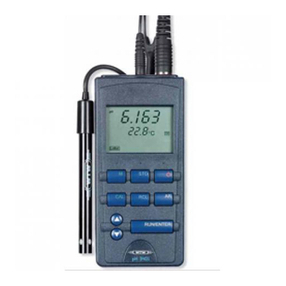
wtw
wtw pH 330i operating manual
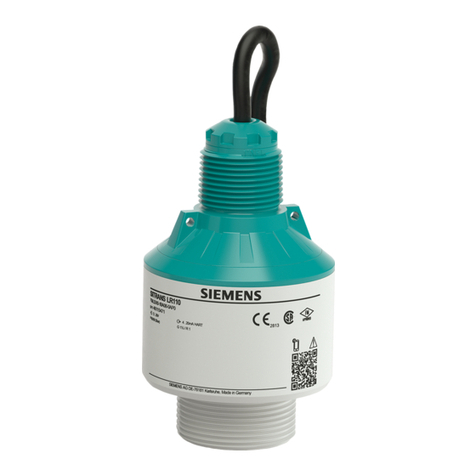
Siemens
Siemens SITRANS L APPLICATION EXAMPLES
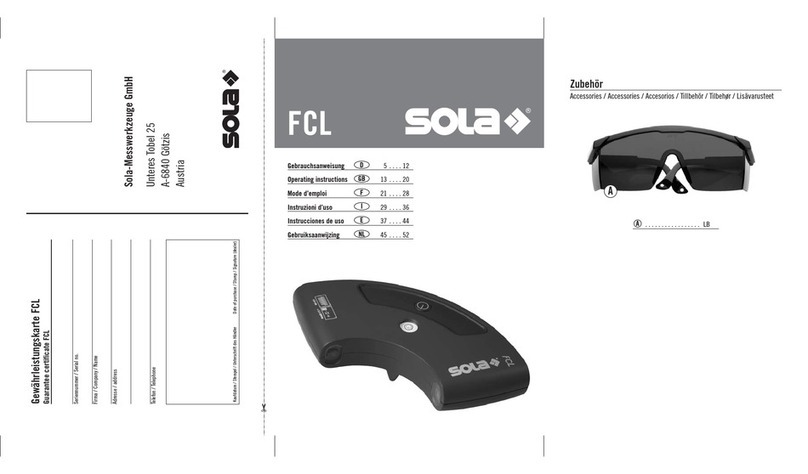
Sola
Sola FCL operating instructions
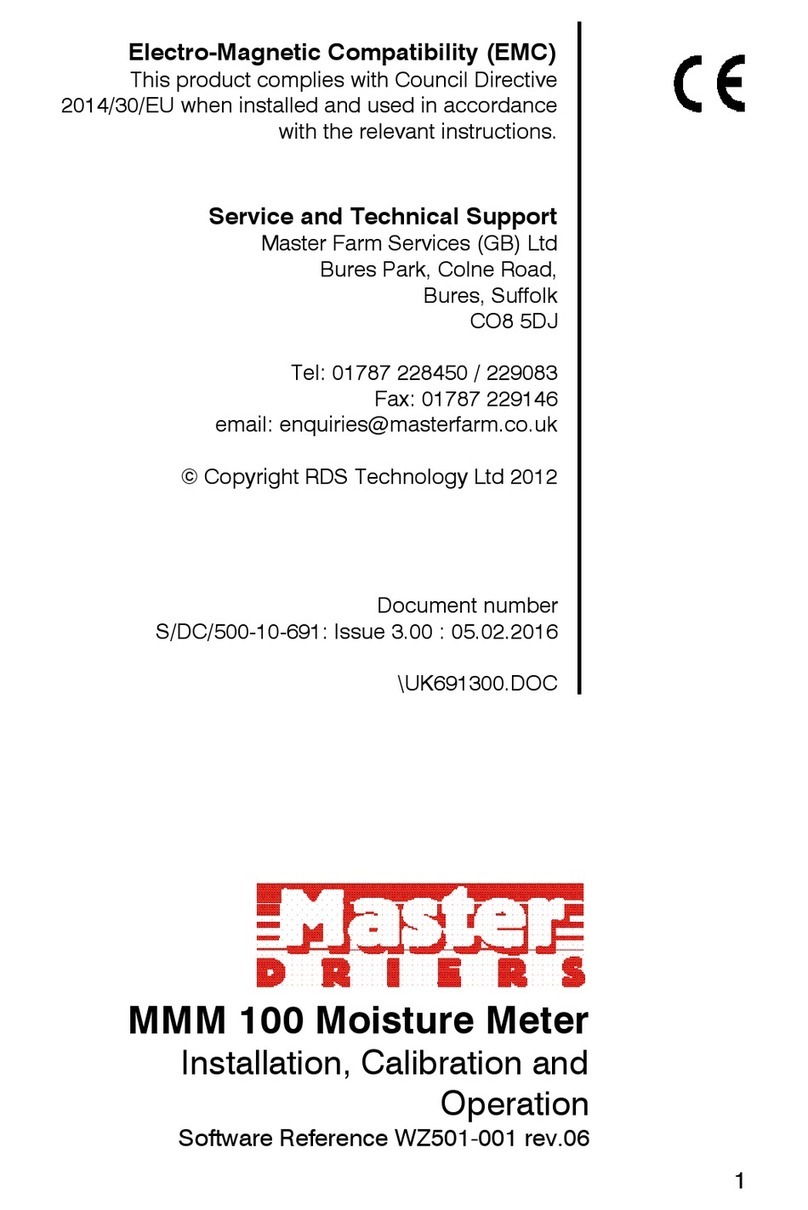
RDS Technology
RDS Technology Master Driers MMM 100 Installation, Calibration and Operation
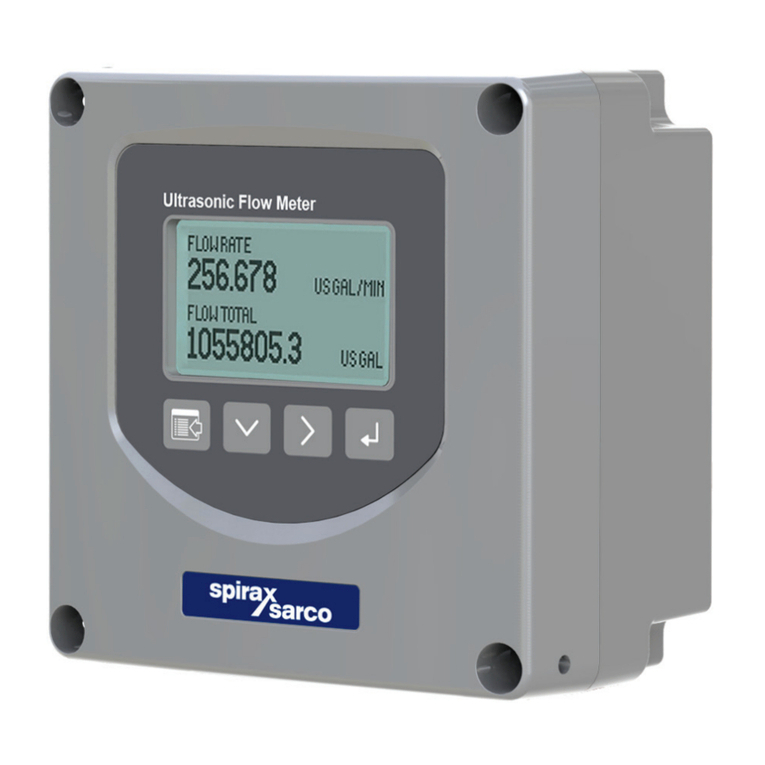
Spirax Sarco
Spirax Sarco UTM20 Series Installation and maintenance instructions
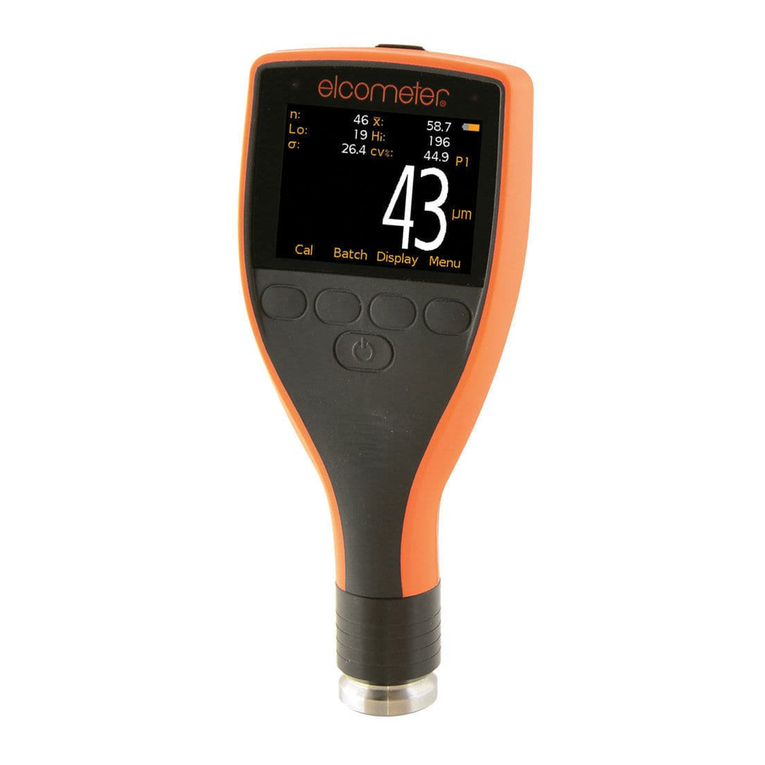
Elcometer
Elcometer 224 operating instructions
